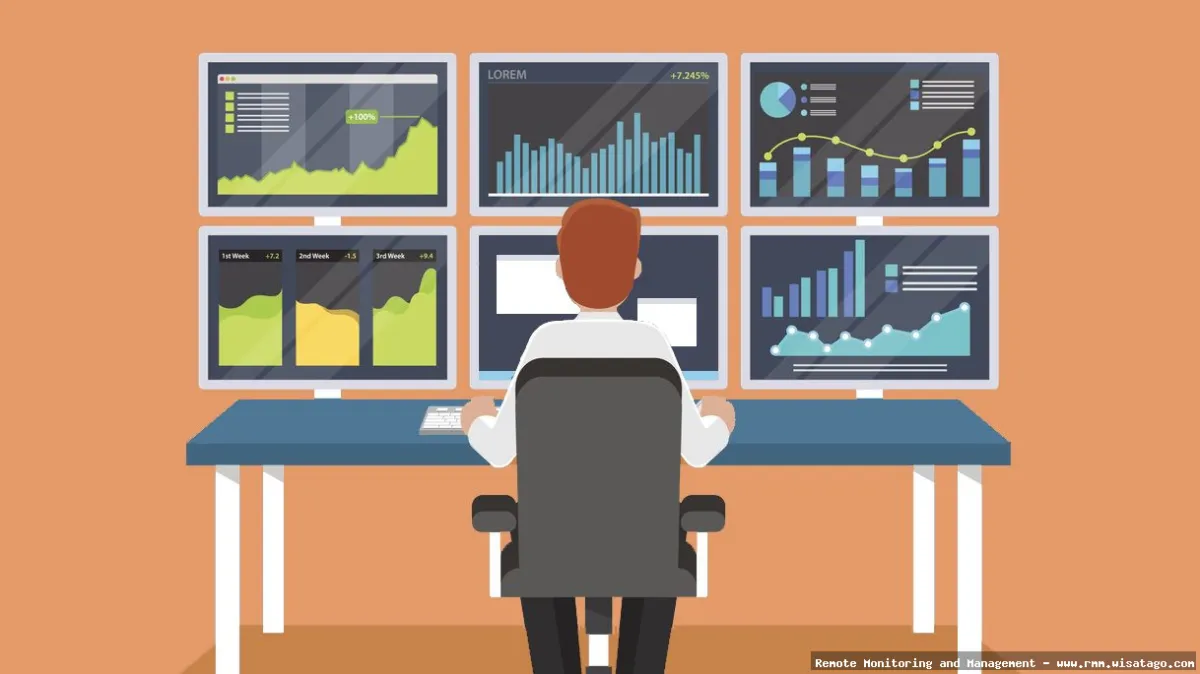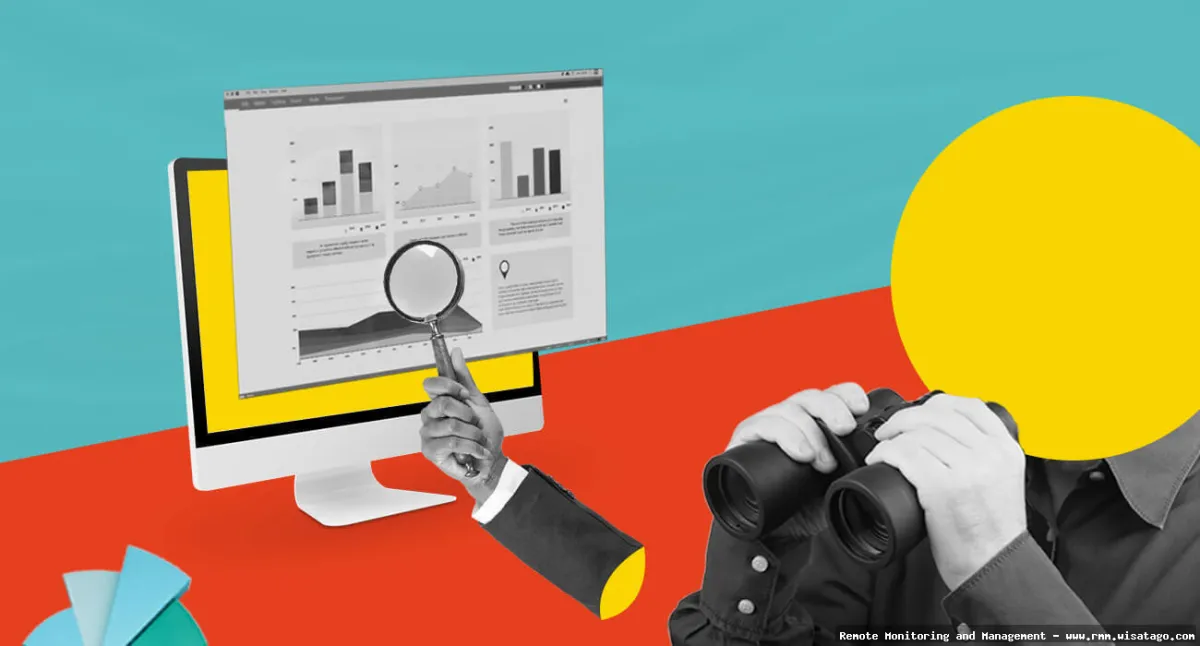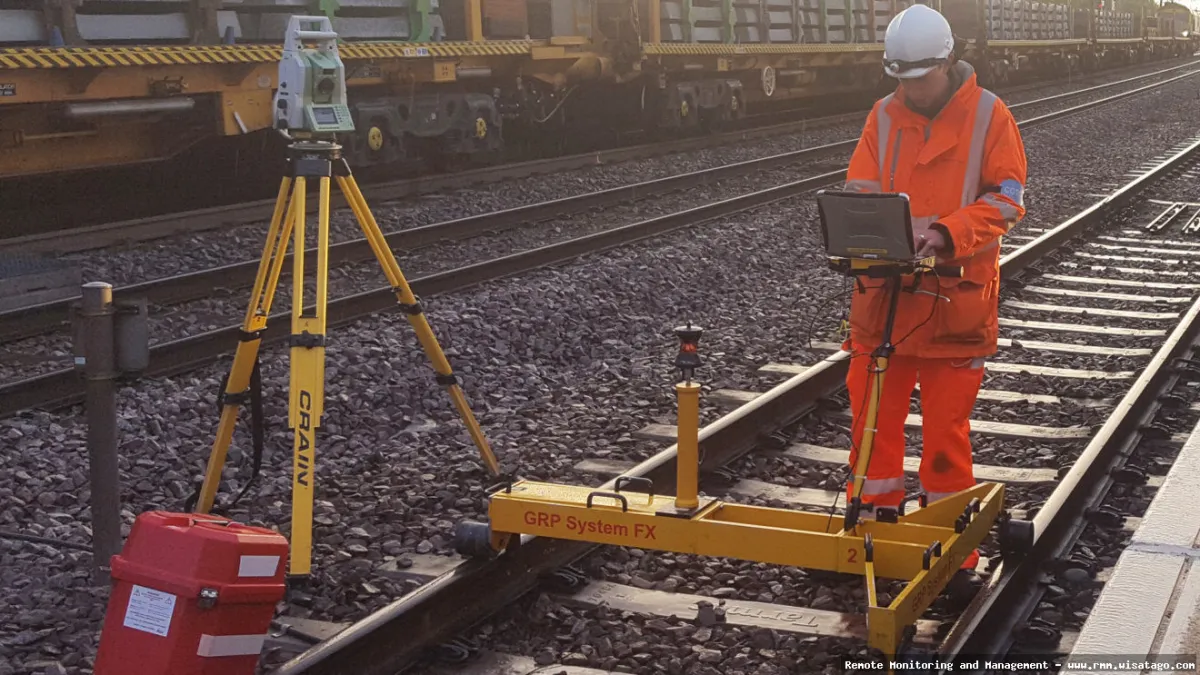Critical infrastructure – the backbone of modern society. We’re talking power grids, water treatment plants, transportation networks, communication systems – the things we take for granted until they stop working. Maintaining the health and security of these systems is paramount, and in today’s complex IT landscape, Remote Monitoring and Management (RMM) solutions are playing an increasingly vital role.
RMM isn’t just for your typical office network anymore. It’s evolving into a crucial tool for monitoring and managing the specialized devices and networks that underpin our essential services. Think about it: SCADA systems controlling pipelines, industrial control systems (ICS) regulating manufacturing processes, and even the advanced sensors monitoring bridges and dams. These systems are increasingly connected, creating both opportunities and vulnerabilities.

This article will delve into the world of critical infrastructure monitoring through RMM. We’ll explore what RMM is, why it’s essential for protecting critical infrastructure, the key features to look for in an RMM solution, and the challenges involved in implementing it. Consider this your comprehensive guide to understanding how RMM can help safeguard the systems we rely on every day.
What is Remote Monitoring and Management (RMM)?
At its core, RMM is a suite of software and services used by IT professionals to remotely monitor and manage client systems. Traditionally, this has focused on endpoints like desktops, laptops, and servers within a business network. However, the principles and technologies of RMM are readily adaptable to the unique challenges of critical infrastructure.
Key Components of an RMM Solution
An RMM solution typically includes the following core components:. Effective IT management often hinges on proactive monitoring, and RMM allows for that level of oversight.
.
- Agent Software: Lightweight software installed on the devices being monitored. These agents collect data, execute commands, and report back to the central RMM platform.
- Central Management Console: A web-based or desktop application that provides a centralized view of all managed devices and allows IT professionals to monitor their status, configure alerts, and perform remote maintenance tasks.
- Alerting and Notification System: A system that generates alerts based on predefined thresholds or events, notifying IT staff of potential issues before they escalate.
- Remote Access Tools: Secure tools that allow IT professionals to remotely access and control managed devices for troubleshooting and maintenance.
- Patch Management: Automated patching of operating systems and applications to address security vulnerabilities and improve system stability.
- Reporting and Analytics: Tools that generate reports on system performance, security posture, and other key metrics.
- Automation Capabilities: The ability to automate routine tasks, such as software deployment, configuration changes, and system cleanup.
Why is RMM Important for Critical Infrastructure?
The stakes are incredibly high when it comes to critical infrastructure. Outages, security breaches, or even minor malfunctions can have significant consequences, impacting public safety, economic stability, and national security. RMM offers several crucial benefits in mitigating these risks:
Proactive Monitoring and Issue Prevention
RMM enables proactive monitoring of critical systems, allowing IT professionals to identify and address potential issues before they lead to failures. By tracking key performance indicators (KPIs) like CPU utilization, memory usage, disk space, and network latency, RMM can detect anomalies and trigger alerts, giving operators time to investigate and resolve problems before they impact operations.
Enhanced Security Posture
Critical infrastructure is a prime target for cyberattacks. RMM can help enhance security posture by providing visibility into the security status of managed devices, identifying vulnerabilities, and automating patch management. This reduces the attack surface and minimizes the risk of successful breaches.
Improved Operational Efficiency
RMM automates many routine tasks, such as software updates, configuration changes, and system maintenance, freeing up IT staff to focus on more strategic initiatives. This can lead to significant improvements in operational efficiency and reduced downtime.
Faster Incident Response
When incidents do occur, RMM provides the tools and information needed to respond quickly and effectively. Remote access capabilities allow IT professionals to diagnose and resolve issues remotely, minimizing downtime and disruption. Detailed logs and reports provide valuable insights for troubleshooting and root cause analysis.
Compliance and Reporting
Many critical infrastructure sectors are subject to strict regulatory requirements. RMM can help organizations demonstrate compliance by providing detailed audit trails and reports on system security, performance, and availability.
Key Features to Look for in an RMM Solution for Critical Infrastructure
Not all RMM solutions are created equal. When selecting an RMM solution for critical infrastructure, it’s important to look for features that are specifically designed to address the unique challenges of these environments:
Support for Industrial Protocols
Critical infrastructure often relies on specialized industrial protocols like Modbus, DNP3, and OPC. An RMM solution should be able to monitor and manage devices that use these protocols.

SCADA and ICS Integration
Seamless integration with SCADA (Supervisory Control and Data Acquisition) and ICS (Industrial Control Systems) is essential for comprehensive monitoring and management of critical infrastructure. The RMM should be able to collect data from these systems and provide real-time visibility into their status. For businesses seeking sustained financial growth, Profitable Rmm Solutions are often a key component of a successful IT strategy
Secure Remote Access
Secure remote access is crucial for troubleshooting and maintenance, but it also presents a significant security risk. The RMM solution should provide robust security features, such as multi-factor authentication, role-based access control, and session recording, to protect against unauthorized access.
Offline Monitoring Capabilities
Critical infrastructure environments often have limited or intermittent network connectivity. An RMM solution should be able to continue monitoring devices even when they are offline and synchronize data when connectivity is restored.
Advanced Threat Detection
RMM solutions should incorporate advanced threat detection capabilities, such as anomaly detection and behavioral analysis, to identify and respond to cyberattacks in real time.
Customizable Alerting and Reporting
The RMM solution should allow you to customize alerts and reports to meet the specific needs of your organization. This includes the ability to define custom thresholds, create custom reports, and integrate with other security and operations tools.
Robust Security
Given the sensitive nature of critical infrastructure, security must be a top priority. The RMM solution should be built on a secure platform and undergo regular security audits to ensure that it is protected against vulnerabilities.
Challenges of Implementing RMM in Critical Infrastructure
While RMM offers significant benefits, implementing it in critical infrastructure can be challenging. Some of the key challenges include:
Legacy Systems
Many critical infrastructure systems are decades old and were not designed to be connected to modern networks. Integrating these legacy systems with an RMM solution can be complex and require specialized expertise.
Security Concerns
Connecting critical infrastructure systems to the internet introduces new security risks. It’s crucial to implement robust security measures, such as firewalls, intrusion detection systems, and multi-factor authentication, to protect against cyberattacks. Segmentation of networks is also key.
Lack of Standardization
Critical infrastructure environments often lack standardization, with a wide variety of devices and protocols in use. This can make it difficult to implement a consistent RMM solution across the entire infrastructure.
Skill Gaps
Implementing and managing an RMM solution requires specialized skills in areas such as network security, industrial protocols, and SCADA/ICS systems. Many organizations lack these skills in-house and need to invest in training or hire specialized personnel.

Cost
Implementing an RMM solution can be expensive, especially for large and complex critical infrastructure environments. It’s important to carefully evaluate the costs and benefits before making a decision.
Best Practices for Implementing RMM in Critical Infrastructure
To overcome these challenges and ensure a successful RMM implementation, consider the following best practices:
Start with a Risk Assessment
Begin by conducting a thorough risk assessment to identify the most critical assets and vulnerabilities. This will help you prioritize your RMM implementation efforts.
Develop a Security Plan
Create a comprehensive security plan that addresses the specific threats and vulnerabilities of your critical infrastructure environment. This plan should include policies and procedures for access control, patch management, incident response, and disaster recovery.
Segment Your Network
Segment your network to isolate critical systems from the rest of the network. This will limit the impact of a security breach and prevent attackers from gaining access to sensitive data.
Implement Strong Authentication
Implement strong authentication mechanisms, such as multi-factor authentication, to protect against unauthorized access to critical systems.
Monitor Network Traffic
Monitor network traffic for suspicious activity. This can help you detect and respond to cyberattacks in real time.
Train Your Staff
Train your staff on the importance of security and the proper use of the RMM solution. This will help them identify and respond to potential threats.
Regularly Audit Your Systems
Regularly audit your systems to ensure that they are secure and compliant with regulatory requirements.
The Future of RMM in Critical Infrastructure
The use of RMM in critical infrastructure is only going to grow in the coming years. As these systems become increasingly connected and complex, the need for proactive monitoring, security, and management will become even more critical. We can expect to see further advancements in RMM technology, including:
- Greater use of artificial intelligence (AI) and machine learning (ML) for anomaly detection and predictive maintenance.
- Enhanced integration with IoT (Internet of Things) devices and sensors.
- More robust security features to protect against evolving cyber threats.
- Improved automation capabilities to streamline operations and reduce downtime.
By embracing RMM and adopting best practices, organizations can significantly improve the security, reliability, and efficiency of their critical infrastructure, ensuring the continued delivery of essential services.

Conclusion
In conclusion, the implementation of Remote Monitoring and Management (RMM) for critical infrastructure monitoring represents a significant advancement in ensuring the reliability, security, and resilience of essential services. By leveraging the comprehensive capabilities of RMM platforms, organizations can proactively identify and address potential issues before they escalate into costly disruptions or catastrophic failures. The enhanced visibility, automated alerting, and remote remediation capabilities offered by RMM empower teams to maintain optimal performance and minimize downtime, ultimately safeguarding the critical infrastructure upon which our society depends.
This article has highlighted the key benefits of utilizing RMM for critical infrastructure, from improved threat detection and faster incident response to enhanced compliance and streamlined maintenance. As cyber threats become increasingly sophisticated and the complexity of infrastructure systems grows, the need for robust monitoring solutions like RMM becomes ever more crucial. We encourage organizations to explore the potential of RMM and consider how it can be integrated into their existing security and operational frameworks. Learn more about implementing an RMM solution tailored to your specific needs by visiting our website and requesting a personalized demo today.
Frequently Asked Questions (FAQ) about Critical Infrastructure Monitoring through RMM
What are the key benefits of using an RMM (Remote Monitoring and Management) platform for critical infrastructure monitoring, and how does it differ from traditional monitoring approaches?
Using an RMM platform for critical infrastructure monitoring offers several key benefits over traditional methods. Primarily, it provides proactive monitoring and alerting, allowing for early detection and resolution of potential issues before they impact operations. This is achieved through automated checks and thresholds set for various infrastructure components like servers, networks, and applications. Unlike traditional methods that often rely on reactive responses to incidents, RMMs provide real-time visibility and historical data, enabling better root cause analysis and trend identification. Additionally, RMMs offer centralized management, automation capabilities (like patching and software deployment), and remote access, significantly reducing the time and resources required for maintenance and troubleshooting. This translates to improved uptime, reduced costs, and enhanced overall system stability. Furthermore, RMMs often include built-in security features, providing an extra layer of protection for critical systems.
How can I effectively configure my RMM system to monitor critical infrastructure components like servers, network devices, and databases for optimal performance and security?
To effectively configure your RMM system for critical infrastructure monitoring, start by identifying your most crucial assets: servers, network devices (routers, switches, firewalls), databases, and key applications. Establish baseline performance metrics for each component, including CPU utilization, memory usage, disk I/O, network latency, and database query response times. Set up customizable alerts that trigger when these metrics deviate from established baselines, indicating potential performance bottlenecks or security threats. Implement regular automated patching schedules to address vulnerabilities in operating systems and applications. Utilize the RMM’s scripting capabilities to automate routine maintenance tasks, such as log file analysis and system cleanup. Finally, ensure that the RMM system is configured to monitor security logs for suspicious activity and integrates with your security information and event management (SIEM) system for comprehensive threat detection and response. Regularly review and adjust your monitoring configuration to adapt to changing infrastructure needs and emerging security threats.
What are some of the common challenges faced when implementing critical infrastructure monitoring with RMM, and what strategies can be used to overcome them?
Implementing critical infrastructure monitoring with an RMM can present several challenges. One common hurdle is alert fatigue, caused by excessive notifications from overly sensitive monitoring rules. To overcome this, fine-tune alert thresholds, implement intelligent alerting mechanisms (e.g., correlating events to reduce noise), and prioritize alerts based on severity and impact. Another challenge is the complexity of configuring and managing the RMM system itself, particularly in large and diverse environments. Strategies to address this include thorough planning, proper training for IT staff, leveraging the RMM vendor’s support resources, and using configuration management tools to automate RMM settings. Data overload can also be an issue; RMMs collect massive amounts of data. Use reporting tools to visualize trends and identify key performance indicators (KPIs). Finally, ensure strong security practices for the RMM platform itself, including multi-factor authentication and regular security audits, to prevent unauthorized access and potential compromise.